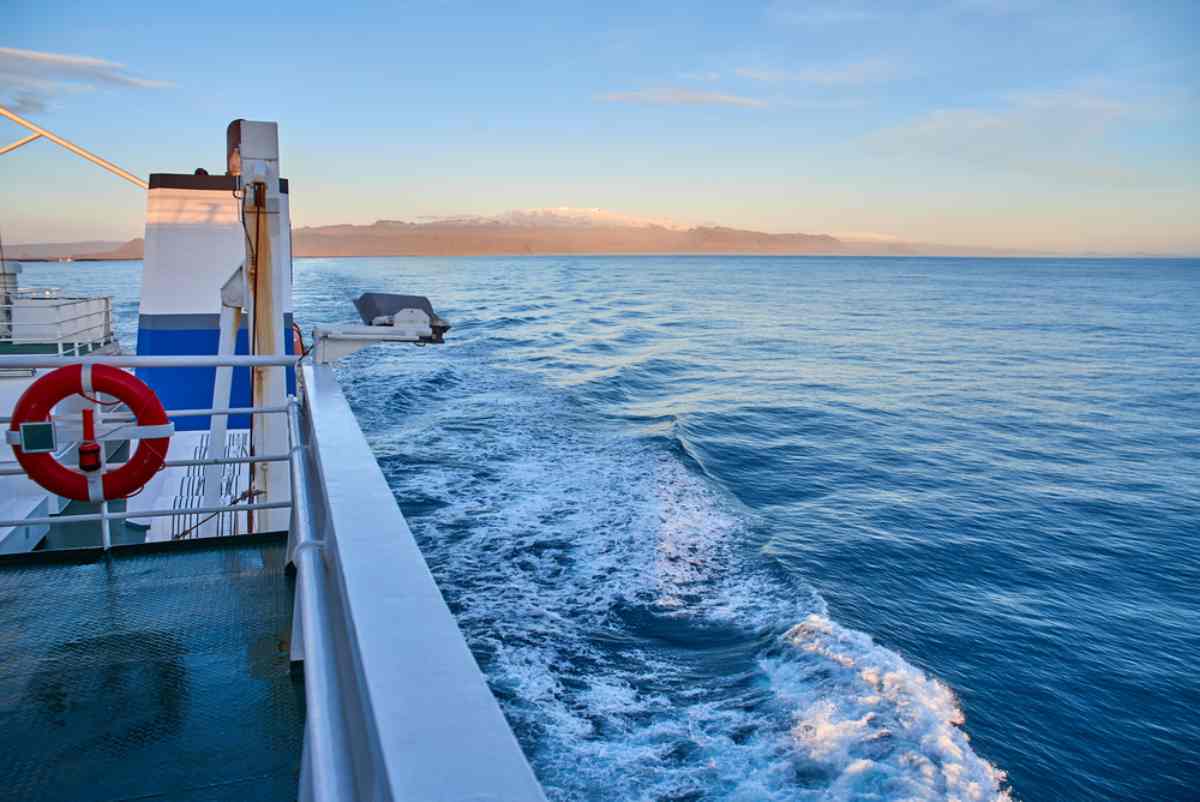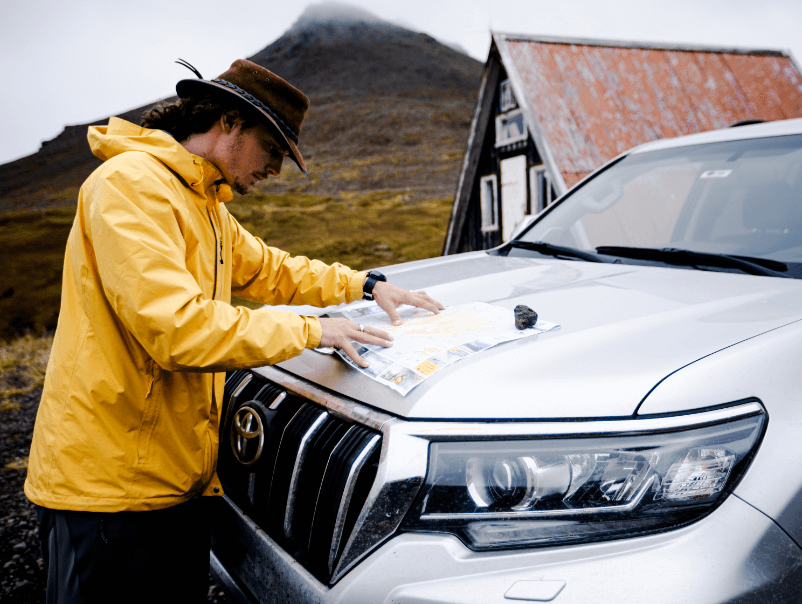Are you tired of the heat and humidity of summer? Do you want to experience the beauty of Iceland without the crowds of peak season? Then fall in Iceland might be the perfect time for you to visit. During fall, the landscapes transform into a colorful and mystical wonderland. This certainly provides a breathtaking backdrop for your adventure.
The temperature drops, but the warmth of the Icelandic culture and hospitality will make you feel right at home. And what better way to experience all of this than in the comfort and convenience of your campervan? By booking a campervan rental, you can explore Iceland at your own pace and have the flexibility to stay wherever you want.
This guide will give you everything you need to know to plan your trip to Iceland during the fall season. We'll include the best places to visit, what to pack, and the top activities to experience. Let's dive into the magic of fall in Iceland.
Visiting Iceland in the Fall
Visiting Iceland in the fall is a unique experience that allows one to witness the country's natural beauty in a new light. During this season, the leaves on the trees turn shades of orange and red, and the countryside is blanketed in a rainbow of colors. The weather during the fall season can be unpredictable. Still, it can also be surprisingly pleasant, with crisp, clear days and vibrant sunsets.
Pros and Cons of Visiting Iceland in the Fall
Fall in Iceland has both advantages and disadvantages. On the one hand, it is much less crowded than during the peak summer season, and you can take advantage of lower accommodation prices.
The days are also longer, so you can maximize your time. However, temperatures are much cooler than during the summer months.
Here are some of the pros and cons of visiting Iceland in the fall:
Pros
- Smaller Crowds: One of the biggest benefits of visiting Iceland in the fall is that the number of tourists is significantly lower than during the peak summer season. This means you can explore Iceland's popular attractions without the crowds and experience the country more peacefully and authentically.
- Beautiful Scenery: The landscapes in Iceland are truly breathtaking, and during the fall season, the countryside is transformed into a colorful wonderland of orange, red, and yellow hues. You'll be able to see the Northern Lights dance across the sky and take in vibrant sunsets and sunrises.
- Mild Temperatures: While Iceland can be cold throughout the year, fall often has milder temperatures than winter. This makes exploring the outdoors more comfortable and participating in activities like hiking and camping.
- Lower Prices: As fall is considered shoulder season in Iceland, you'll often find lower prices on flights, accommodations, and activities. This can make it a more affordable time to visit the country.
Cons
- Shorter Days: One of the downsides of visiting Iceland in the fall is that the days are shorter, which means less time for exploring and sightseeing. However, this can also mean more opportunities to take in the beauty of the Northern Lights.
- Unpredictable Weather: Iceland's weather is notoriously unpredictable, which is also true during the fall season. You may experience rain, wind, and even snow, impacting your travel plans and activities.
- Limited Accessibility: Some of Iceland's F-roads may be closed during winter, so you may miss out on certain attractions if you visit in the fall.
- Potential for Closures: As the fall season is shoulder season, some businesses and attractions may have reduced hours or be closed altogether. This can limit your options for dining and entertainment, so it's essential to plan accordingly.
Differences Between Visiting Iceland in the Fall and Other Seasons
Iceland is a country that offers unique experiences, no matter what time of year you visit. However, each season has its advantages and disadvantages.
Let's look at how fall in Iceland differs from other seasons.
- Summer: Summertime in Iceland is the most popular season to visit, as the days are longer and temperatures are milder. This makes it an ideal time for outdoor activities like hiking and exploring the countryside. However, accommodation prices are also at their peak during this time.
- Winter: Winter in Iceland is a magical time of year, with the possibility of snow-covered landscapes, skiing and snowboarding opportunities, and even dog sledding. However, the days are much shorter than during other seasons, and some attractions may be closed or have limited hours.
- Spring: Spring in Iceland is one of the best times to see the Northern Lights, as the days are still short and dark. Temperatures start to warm up during this season, making it an excellent time for outdoor activities. Prices are lower than in the summer, but some attractions may remain closed or have limited hours.
- Autumn: Fall in Iceland is a quieter time of year, with milder temperatures and lower prices. However, the days start to get shorter, and there may be some closures or limited access to certain attractions.
Overview of Autumn in Iceland
Autumn in Iceland is a beautiful and unique time to visit the country. Running roughly from September to November, the season is characterized by cooler temperatures, changing leaves, and the chance to experience the Northern Lights.
While the weather in Iceland in the fall can be unpredictable, the landscapes take on a new level of beauty. The countryside becomes a riot of reds, yellows, and oranges. The fall season also tends to see a decrease in tourist numbers, meaning you'll have more space to enjoy Iceland's natural wonders without having to navigate large crowds.
What Makes Autumn in Iceland Unique
Iceland is a stunning country to visit year-round, but there's something special about the fall season. Here are some reasons why autumn in Iceland is unique:
- Stunning Landscapes: As the leaves change color and the days grow shorter, Iceland's landscapes take on a new level of beauty. From waterfalls to glaciers, every natural wonder seems lit with fall colors.
- Northern Lights: The fall season is one of the best times to see them. With longer nights and clearer skies, you'll have a good chance of catching this spectacular natural phenomenon.
- Harvest Season: Iceland may not be known for its agricultural traditions, but the fall season is an important time for harvesting crops like potatoes, turnips, and carrots. You'll be able to sample local produce and learn about Icelandic farming traditions.
- Cozy Culture: As the weather turns cooler, Icelanders embrace a culture of coziness known as "hygge." From warm drinks to cozy blankets, you'll find plenty of ways to embrace this cozy culture during your fall visit.
Average Temperatures in Iceland in the Fall
It's important to note that temperatures can vary depending on where you are in Iceland, with coastal areas typically having milder temperatures than inland areas. Additionally, weather conditions can change quickly, so it's essential to check the forecast and come prepared.
Here is a breakdown of the average temperatures in Iceland in the fall:
- September: Average high is 10°C (50°F), and average low is 5°C (41°F)
- October: Average high is 6°C (43°F), and average low is 2°C (36°F)
- November: Average high is 3°C (37°F), and average low is -1°C (30°F)
Temperature Differences Between Different Parts of Iceland
Iceland's geography and location can result in significant temperature variations between different regions, particularly during the fall season.
Here are some examples of the temperature differences you might encounter in other parts of Iceland:
- Coastal regions: Iceland's coastal regions, particularly the south, and west, have milder temperatures than inland. This is due to the moderating influence of the ocean. In the fall in Iceland, average temperatures in coastal areas are around 8-10°C (46-50°F).
- Inland regions: Inland areas of Iceland, particularly those in the highlands, can be significantly colder than coastal areas in the fall season. This is due to the lack of moderating influence from the ocean and the higher altitude. Average temperatures in these regions during the fall season can range from around 0-5°C (32-41°F).
- Northern regions: Iceland's northern regions, particularly those in the northeast, can also be chilly in the fall. Average temperatures in these regions can range from around 0-5°C (32-41°F). However, the aurora borealis (northern lights) are often visible in these regions during fall, making them a popular destination for visitors.
You can also read our comprehensive Iceland weather guide for more information about temperatures and weather conditions in Iceland.
Tips for Staying Warm and Comfortable During the Fall in Iceland
Iceland's fall season can be chilly and unpredictable, so it's essential to come prepared with appropriate clothing and gear to ensure you stay warm and comfortable during your trip.
Here are some tips to help you do just that:
- Layer up: Dressing in layers is critical to staying warm and comfortable in Iceland's fall weather. Be sure to bring base, mid-layers, and outer layers that can be easily added or removed.
- Invest in good-quality outdoor gear: Good-quality outdoor gear, such as waterproof and windproof jackets, pants, and boots, can help keep you warm and dry in Iceland's fall weather.
- Pack warm accessories: Bringing warm accessories such as hats, gloves, scarves, and thick socks can also help keep you comfortable in cooler temperatures.
- Consider renting a campervan with a heater: Renting a campervan with a heater can be a great way to stay warm and cozy during your trip, particularly if you plan to camp or explore Iceland's more remote areas.
- Take advantage of hot springs: Iceland is known for its geothermal hot springs, which can be a great way to warm up and relax after exploring. Be sure to bring a swimsuit and towel.
What to Expect From Iceland Autumn Weather
The Iceland autumn weather can be variable and unpredictable, with rapidly changing conditions and occasional storms. However, you can still enjoy fall in Iceland with some preparation and flexibility.
Here are some things to expect from Iceland's autumn weather:
- Variable weather: Autumn in Iceland is often characterized by rapidly changing conditions and occasional storms. Be sure to bring appropriate gear for any weather.
- More daylight: Fall in Iceland is a great time to take advantage of the extended daylight hours. The sun rises as early as 6 am and sets after 8 pm, giving you plenty of time to explore.
- Less humidity: The days in Iceland during the fall are often sunny and breezy, with low humidity levels. This can make outdoor activities such as hiking and exploring more comfortable.
Best Time to Visit Iceland During the Fall
While Iceland's autumn season can be a great time to visit, certain times are generally considered the best for travelers. Here are some things to consider when planning your visit to Iceland during the fall:
- September: Early September in Iceland is an excellent time to visit. The crowds are generally smaller, and the weather is still relatively mild. However, be aware that some tourist attractions may start to close for the season towards the end of the month.
- October: October in Iceland is a popular time, as the fall foliage is at its peak and the Northern Lights season begins. However, temperatures can drop, and the weather can be more unpredictable.
- November: November in Iceland is great, as the Northern Lights season continues and the crowds of tourists dissipate. However, temperatures can drop even lower, making it necessary to bring extra warm clothing and gear for outdoor activities.
Things to Do in Iceland in the Fall
Iceland's autumn season offers plenty of unique experiences for travelers to enjoy. From hiking through colorful landscapes to soaking in hot springs, the possibilities are endless.
Here are some top things to do in Iceland in the fall:
- See the Northern Lights: With darker nights and clearer skies, fall is one of the best times to see the Northern Lights in Iceland. You can tour or go on a DIY Northern Lights hunt with your Iceland campervan.
- Enjoy a hot spring: Iceland is home to many geothermal hot springs, and fall is a great time to soak in them. Some popular options include the Blue Lagoon, the Secret Lagoon, and the Myvatn Nature Baths.
- Visit national parks: Iceland's national parks are stunning year-round, but fall brings beautiful autumn colors to the landscape. Some famous national parks during the fall in Iceland include Thingvellir, Vatnajokull, and Skaftafell.
- Take a road trip: Fall is a great time to explore Iceland's scenic routes by car or campervan. You can drive the Golden Circle or take on the Ring Road.
- Hike in the highlands: The Icelandic highlands offer some of the most beautiful hiking trails in the world, and fall is a great time to experience them. The weather may be cooler, but the scenery is worth it.
- Experience Icelandic culture: Fall is also a great time to experience Icelandic culture, with events like the Iceland Airwaves music festival and the Reykjavik International Film Festival taking place during this season.
Best Places to Visit in Iceland During the Fall With Your Campervan
Exploring Iceland in the fall is a breathtaking experience. There's no better way to do it than with a campervan. Not only does a campervan, motorhome, or RV allow you to roam around Iceland's stunning landscapes at your own pace, but it also allows you to experience the country's natural beauty up close and personal.
If you intend to visit Iceland in the fall, make sure to include these top destinations to your itinerary:
- The Golden Circle: This famous route includes Iceland's three most popular attractions - Thingvellir National Park, Geysir, and Gullfoss Waterfall.
- Skaftafell National Park: Located in the southeast, this park offers breathtaking hikes and stunning views of glaciers, mountains, and waterfalls.
- Snæfellsnes Peninsula: This remote and picturesque area is known for its rugged landscapes and stunning coastline. During the fall in Iceland, this peninsula is surrounded by vivid autumn colors.
- Westfjords: This remote and untouched region is known for its dramatic fjords and rugged mountains. The foliage adds a unique charm to the already stunning scenery during the fall.
- Landmannalaugar: This remote and rugged region is known for its multicolored rhyolite mountains, hot springs, and spectacular hiking trails. During the fall, the landscape is painted with various autumn colors.
What to Pack for Iceland in the Fall
Packing for a trip to Iceland during the fall can be tricky. The weather can be unpredictable, so it's important to pack items that keep you warm and dry while allowing you to move around comfortably.
Here’s what to pack for Iceland in the fall:
- Waterproof and windproof jacket
- Warm layers, such as sweaters and fleece jackets
- Insulated and waterproof boots
- Thermal underwear and socks
- Swimsuit and a beach towel (the hot springs are too tempting to miss)
- Gloves, hat, and scarf
- Sunglasses and sunscreen (even in the fall, the sun can still be strong)
- Backpack or daypack for carrying items during outdoor activities.
How to Save Money When You Travel To Iceland in the Fall
Traveling to Iceland in the fall can be a great way to save money while still experiencing all the beauty and adventure the country offers.
Here are some tips on how to save money when you travel to Iceland in the fall:
- Travel during the shoulder season: The fall is considered a shoulder season, which means that prices for flights, accommodations, and activities may be lower than during the peak summer season.
- Book in advance: Book as far as possible to get the best deals on flights and accommodations. You can also consider booking a package deal with your flight and accommodations.
- Consider staying in a campervan: Renting a campervan can be more affordable than staying in a hotel or Airbnb. Plus, you'll be free to explore the country at your convenience.
- Cook your own meals: Eating out in Iceland can be expensive, so consider cooking your meals in your campervan or at a hostel with a shared kitchen.
- Look for free activities: There are many free activities to do in Iceland, such as hiking, visiting waterfalls, and exploring national parks. Look for these activities to save money while experiencing the country's natural beauty.
- Use public transportation: If you don't want to rent a car or campervan, consider using public transportation, such as buses, to get around the country. This can be a more affordable option than renting a car.
Plan Your Fall Trip to Iceland Today
Fall in Iceland is a magical time of year that offers travelers a unique and unforgettable experience. Its stunning landscapes, vibrant fall colors, and wide range of activities make it the perfect destination for anyone looking to escape and immerse themselves in nature.
By booking a campervan rental, you'll be free to explore all that Iceland offers at your own pace, while staying warm and comfortable along the way. So, what are you waiting for? Start planning your fall trip to Iceland today and experience the adventure of a lifetime!



 By
By 






